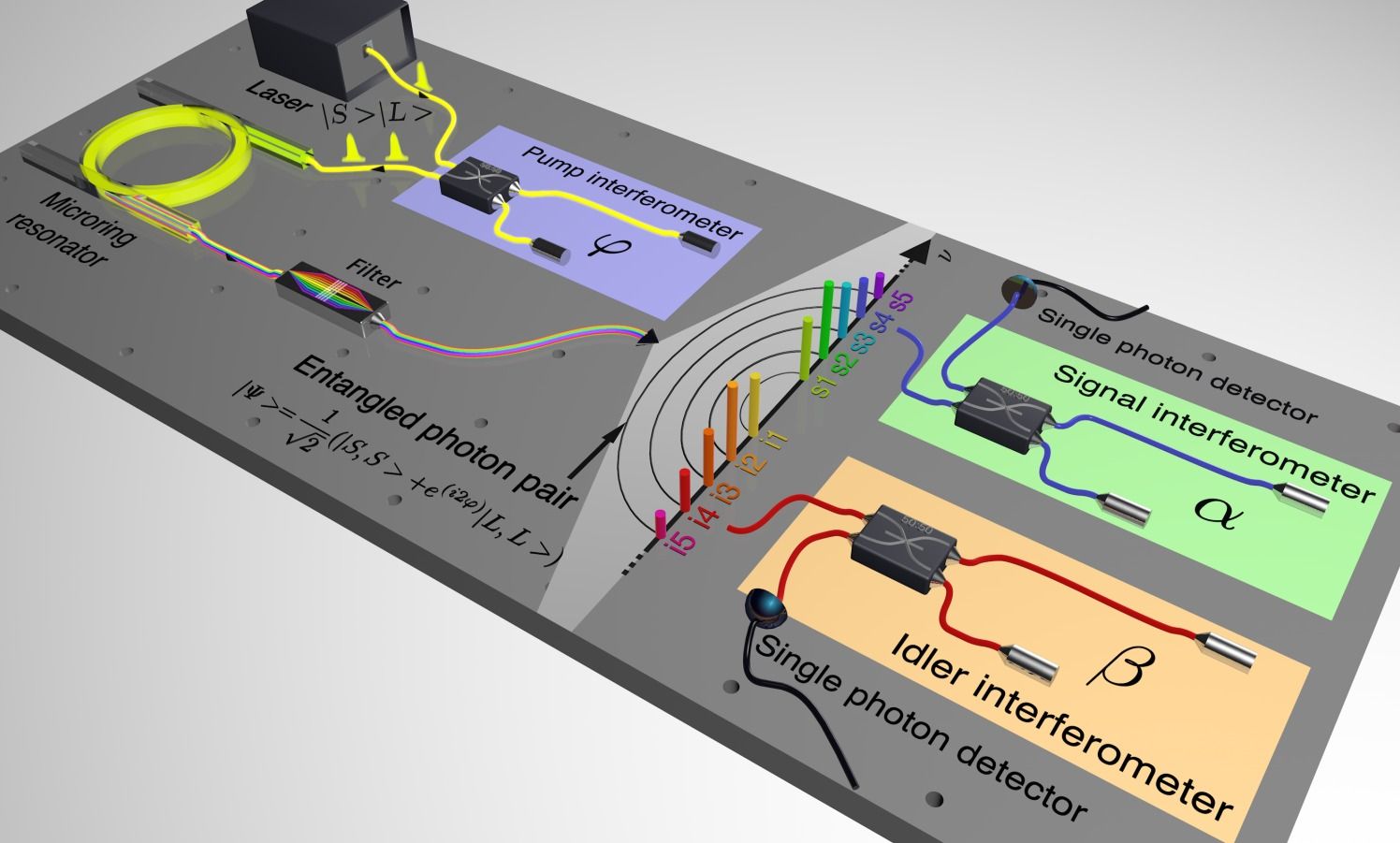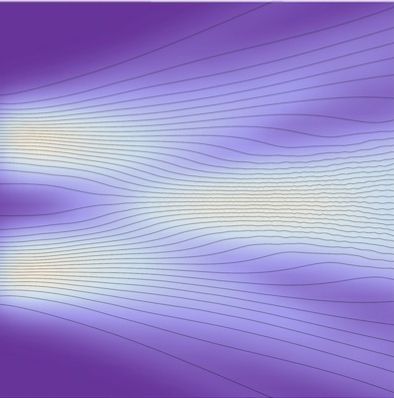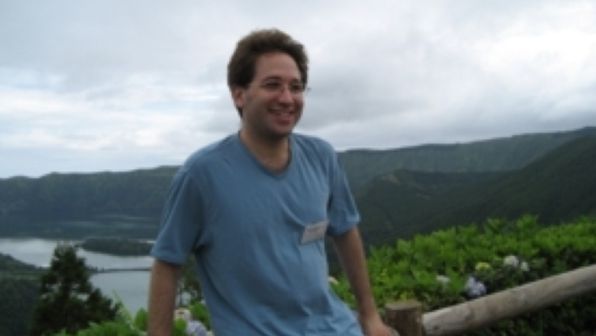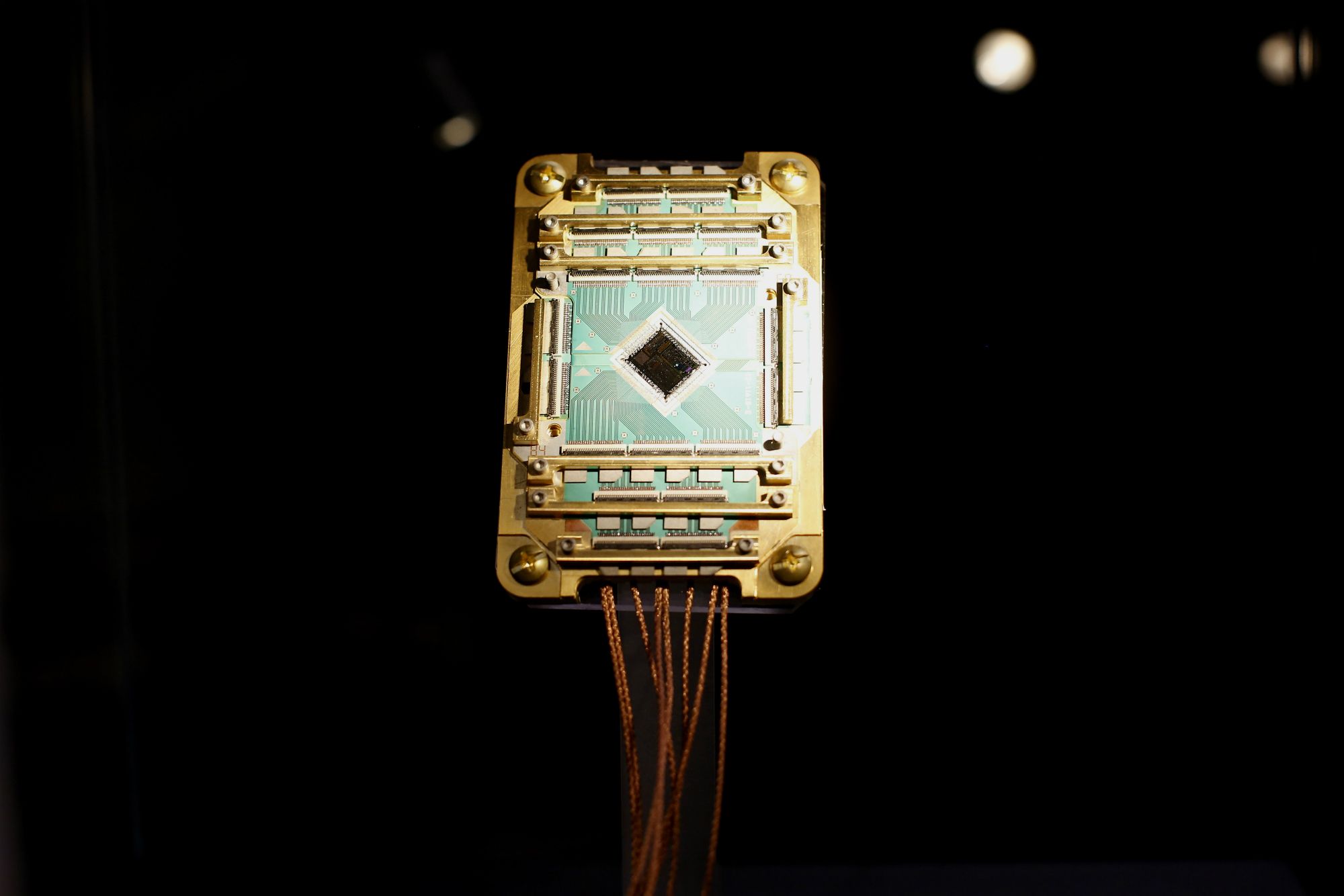Archive for the ‘quantum physics’ category: Page 768
Apr 28, 2016
Unzipping The Quantum-Classical Boundary
Posted by Karen Hurst in categories: computing, quantum physics
More highlights around the correlation of Data Compression and Quantum Entanglement. I do believe as we move forward with Quantum Computing (QC) that we will discover many other correlations and re-usage of existing technology principles with Quantum Computing.
Does this data belong in the classical or the quantum world? Run it through a zip compression program to find out!
Apr 27, 2016
Researchers create a first frequency comb of time-bin entangled qubits
Posted by Karen Hurst in categories: computing, particle physics, quantum physics, security
Quantum mechanics, with its counter-intuitive rules for describing the behavior of tiny particles like photons and atoms, holds great promise for profound advances in the security and speed of how we communicate and compute.
Now an international team of researchers has built a chip that generates multiple frequencies from a robust quantum system that produces time-bin entangled photons. In contrast to other quantum state realizations, entangled photons don’t need bulky equipment to keep them in their quantum state, and they can transmit quantum information across long distances. The new device creates entangled photons that span the traditional telecommunications spectrum, making it appealing for multi-channel quantum communication and more powerful quantum computers.
“The advantages of our chip are that it’s compact and cheap. It’s also unique that it operates on multiple channels,” said Michael Kues, Institut National de la Recherche Scientifique (INRS), University of Quebec, Canada.
Apr 27, 2016
Does Quantum Weirdness Arise When Parallel Classical Worlds Repel?
Posted by Andreas Matt in categories: cosmology, quantum physics
With that goal in mind, a few years back, Wiseman began to ponder what would happen if multiple worlds not only existed, but could influence each other. Within these worlds even objects on the smallest scales obey the plain old rules that Isaac Newton devised to explain force and motion. A classical law is also used to describe the forces that the parallel worlds exert on each other. “Ours is a new picture of reality at the atomic scale,” Hall says, adding that they believe it to be “both elegant in principle, and useful for calculations in practice.”
Apr 26, 2016
Global Wearable Technologies: Devices, Applications, And Services Market 2016 — 2021
Posted by Karen Hurst in categories: 3D printing, augmented reality, computing, drones, mobile phones, quantum physics, robotics/AI, singularity, space travel, virtual reality, wearables
We’re in an exploding evolution state for technology across all industry sectors and consumer markets.
3 to next 5 years — we see IoT, Smartphones, Wearables, AI (bots, drones, smart devices and machines), 3D printing, commercialization of space, CRISPR, Liq Biopsies, and VR & AR tech.
5 to next 8 years — we will see more BMI technology, smart body parts, QC & other Quantum Tech, Humanoid AI tech, bio-computing, early stage space colonization and mining expansion in space, smart medical tech., and an early convergence of human & animals with technology. 1st expansion of EPA in space exploration due to mining and over mining risks as well as space colonization. New laws around Humanoids and other technologies. Smartphones no longer is mass use due to AR and BMI technology and communications.
Apr 26, 2016
Quantum dots for high-resolution brain imaging
Posted by Karen Hurst in categories: neuroscience, quantum physics
Quantum dots exhibit a measurable rapid photoluminescence response to neuron-like electric fields and can thus be used to observe neuronal action potentials.
Apr 26, 2016
The universe, where space-time becomes discrete
Posted by Andreas Matt in category: quantum physics
In quantum gravity, classical physics and quantum mechanics are at odds: scientists are still uncertain how to reconcile the quantum “granularity” of space-time at the Planck scale with the theory of special relativity. In their attempts to identify possible tests of the physics associated with this difficult union, the most commonly studied scenario is the one that implies violations of “Lorentz invariance”, the principle underlying special relativity. However, there may be another approach: to salvage special relativity and to reconcile it with granularity by introducing small-scale deviations from the principle of locality. A recent theoretical study just published in Physical Review Letters and led by the International School for Advanced Studies (SISSA) in Trieste has analysed such a model demonstrating that it can be experimentally tested with great precision. The team is already collaborating on developing an experiment, which will take place at the LENS (European Laboratory for Non-linear Spectroscopy) in Florence, some members of which have also taken part in the theoretical study.
Our experience of space-time is that of a continuous object, without gaps or discontinuities, just as it is described by classical physics. For some quantum gravity models however, the texture of space-time is “granular” at tiny scales (below the so-called Planck scale, 10–33 cm), as if it were a variable mesh of solids and voids (or a complex foam). One of the great problems of physics today is to understand the passage from a continuous to a discrete description of spacetime: is there an abrupt change or is there gradual transition? Where does the change occur?
The separation between one world and the other creates problems for physicists: for example, how can we describe gravity – explained so well by classical physics – according to quantum mechanics? Quantum gravity is in fact a field of study in which no consolidated and shared theories exist as yet. There are, however, “scenarios”, which offer possible interpretations of quantum gravity subject to different constraints, and which await experimental confirmation or confutation.
Apr 26, 2016
Scott Aaronson Answers Every Ridiculously Big Question I Throw at Him
Posted by Sean Brazell in categories: computing, neuroscience, quantum physics, singularity
Quantum-computer whiz riffs on simulated universes, the Singularity, unified theories, P/NP, the mind-body problem, free will, why there’s something rather than nothing, and more.
Apr 26, 2016
Building the Foundation of the Cognitive Computing Era
Posted by Karen Hurst in categories: computing, quantum physics, robotics/AI
For almost a year I have shared how Quantum technology will take AI to a new level. This article highlights the benefits of Quantum in AI.
Scott Crowder of IBM discusses the technologies and data infrastructure that will be required to drive the cognitive computing and artificial intelligence systems of the near future.
Apr 26, 2016
Europe’s billion Euro bet on quantum computing
Posted by Karen Hurst in categories: computing, neuroscience, quantum physics, space travel
Nice
Quantum computers have been hailed for their revolutionary potential in everything from space exploration to cancer treatment, so it might not come as a surprise that Europe is betting big on the ultra-powerful machines.
A new €1 billion ($1.13 billion) project has been announced by the European Commission aimed at developing quantum technologies over the next 10 years and placing Europe at the forefront of “the second quantum revolution.”
Continue reading “Europe’s billion Euro bet on quantum computing” »

















